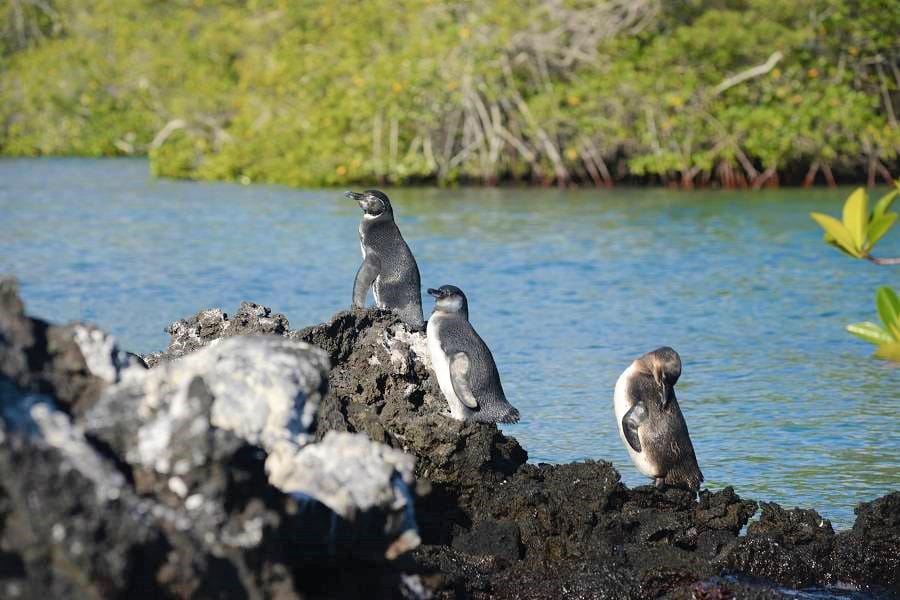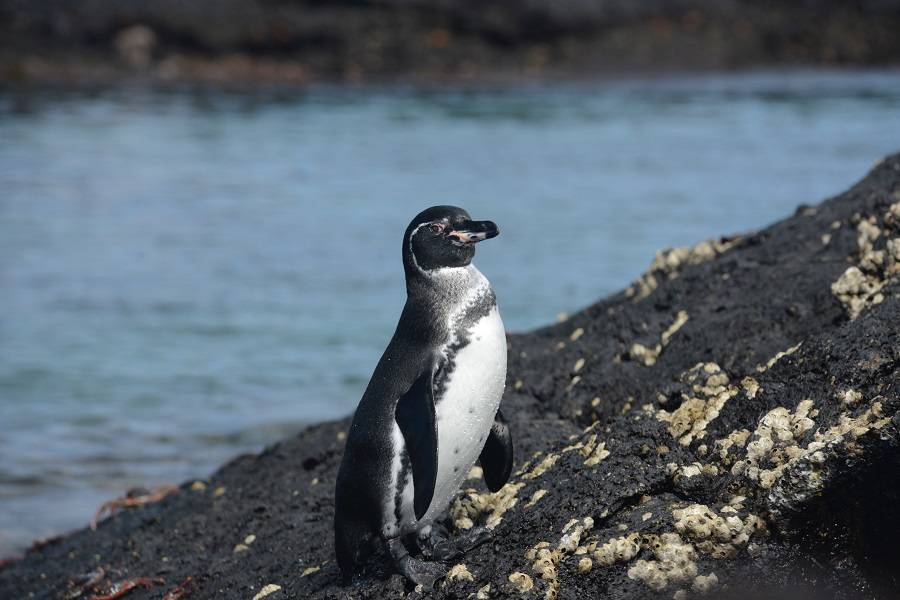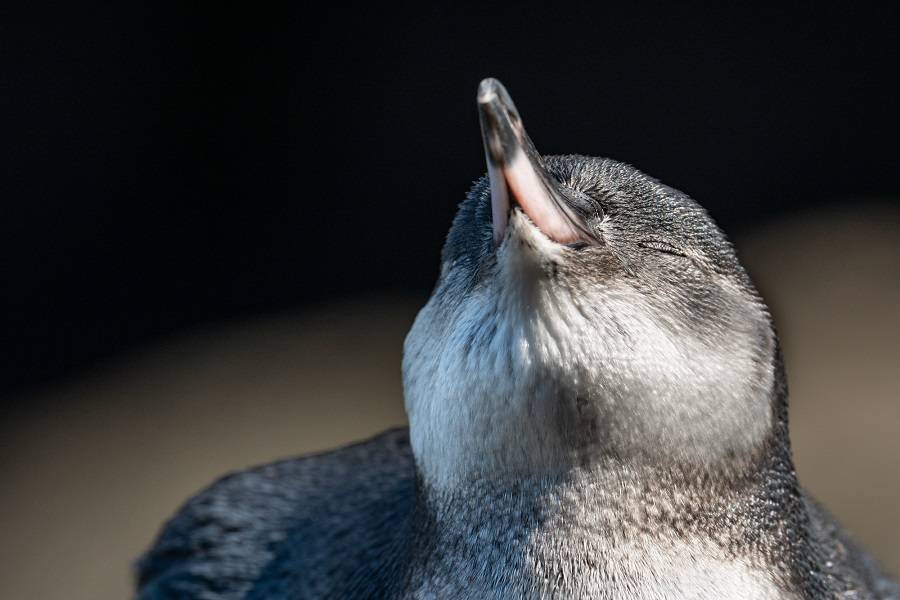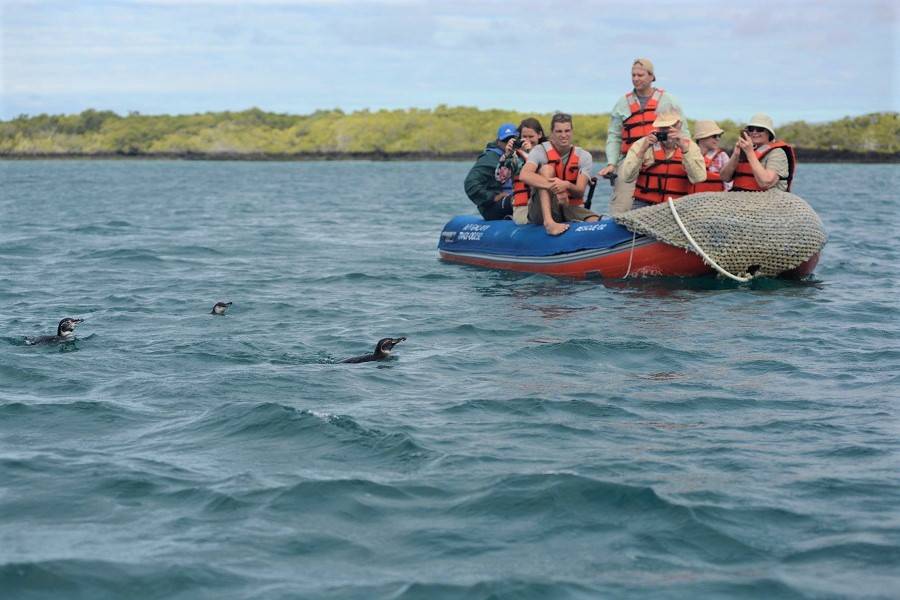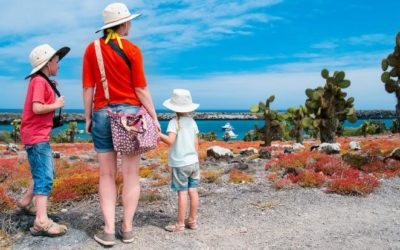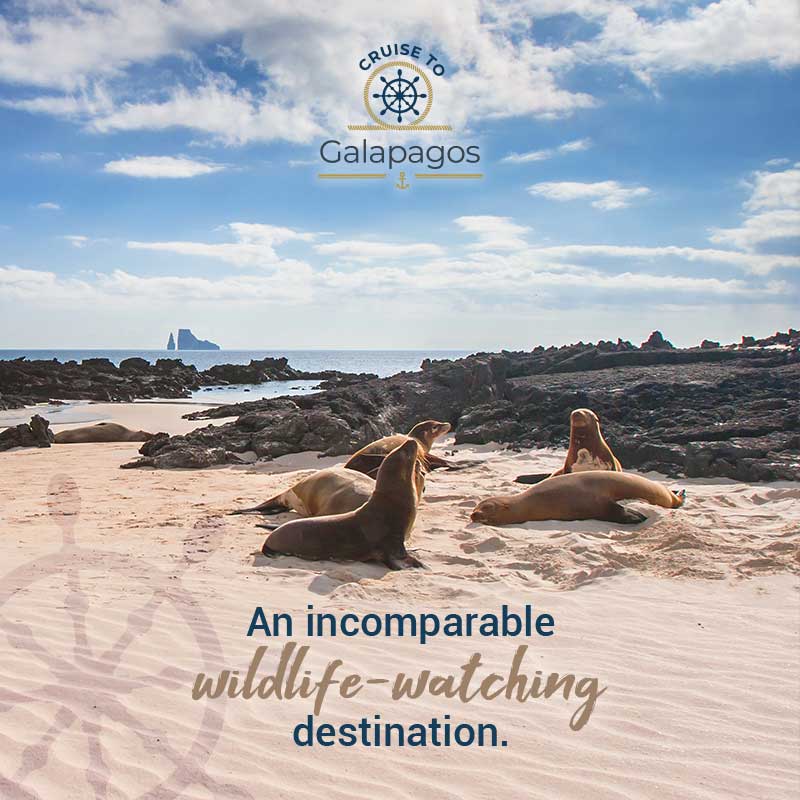The Galapagos Penguin, an endemic species
Stay up to date with our most recent news and updates
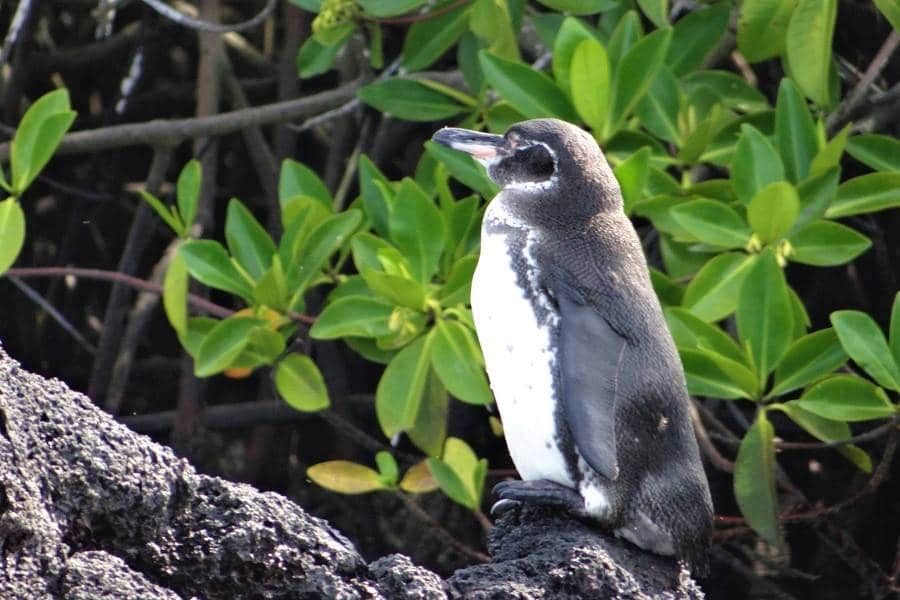
Galapagos Penguin
Scientific name: Spheniscus mendiculus
Biological taxon: Endemic
Lifespan: 17 years
UICN Red List Status: Endangered (EN)
Range: Galapagos Islands: Isabela, Fernandina, Bartolome and Floreana (breeding colonies). See as non-breeders in Santa Cruz, Rabida, Pinzón, Española, North Seymour, Baltra and sometimes in Wolf.
The Galapagos Penguin 🐧 is an endemic species of the islands, therefore, they only inhabit this archipelago. It is one of the most popular seabirds among tourists and islanders.
These “little boys dressed in tuxedos” are the only species of Penguins that inhabit the equatorial zone. They can be seen mainly in the Western Islands such as Isabela, Fernandina, and Bartolome.
Without a doubt, taking a cruise 🚢 is the best option to meet these beautiful sea birds.
Check the best Galapagos cruises here.
Pack your camera 📷, your snorkel gear 🤿, and get ready to live an unforgettable experience!
Continue reading this post 🤓📰 and discover more about these incredible seabirds unique to the planet.
The smallest penguins in the world?
The length of the Galapagos penguin 🐧 is approximately 53 cm (21 inches) and its average weight is 1.7-2.6 kg (4-6 pounds).
This penguin of the genus “Spheniscus” is related to the African, Magellanic, and mainly Humboldt penguins who live from the north of Chile 🇨🇱 to the south of Peru 🇵🇪.
The Galapagos penguins 🐧 are the second smallest species in the world after the fairy penguins.
Galapagos Penguin Appearance
The Galapagos penguin 🐧 seems to be dressed for an important “gala party”. Because, your visit to the Galapagos Islands is an exceptional event, and the Galapagos penguins knowns.
Adults have black plumage that covers their chin and back; and most of the plumage on its chest is white. It also has white feather stripes in a “C” shape on the sides of its head.
The young, on the other hand, has a gray plumage that covers their head and back; and they have a white underside. Chicks 🐣 are covered in the fluff of soft light gray feathers.
What is the best season to visit Galapagos? More details here.
Agile and skilled underwater
Like other species of seabirds, Galapagos penguins 🐧 have a hydrodynamic body to decrease resistance to water; they are extremely agile and skilled underwater.
This endemic Galapagos bird can reach speeds of up to 35 km / h when hunting. They are “torpedoes” underwater!
Galapagos penguin diet
Their main diet includes sardines, red mullet, and anchovies 🐟, although they can also eat mollusks sometimes 🐚. Hunting is an activity carried out during the day very close to their nesting sites.
Galapagos penguins have some natural predators in the water such as sea lions and Galapagos sharks 🦈; and on land the Galapagos Hawk 🦅.
What to pack for your next Galapagos trip? 🧳👒, see more details here.
Reproduction, nesting, and rearing
In most cases, the breeding pairs 🐧🐧 are monogamous for life, the pair can produce 3 clutches of eggs per year and the females lay 1-2 eggs 🥚 per clutch. Their nest is built with rocks and twigs, they are usually located in caves or crevices in the coastal lava.
As is the case with many birds in Galpápagos, the incubation process is shared by the parents over a period of 38 to 42 days. Both parents feed the chicks 🐣 until they are between 60 and 65 days old. The chicks become completely independent between 3-6 months of age.
Interesting facts
- This penguin is the only species that can be found in the equatorial zone and that nests in the tropics.
- Unlike most penguin species, Galapagos penguin chicks do not join “nurseries” (groups).
- The Galapagos penguin has a sedentary behavior, it does not go more than 5 km from its small colonies.
- They coexist with the blue-footed booby and the Galapagos pelican.
- The Galapagos penguin is a relative of the Humboldt penguin.
- The Galapagos penguin came swimming in cold currents more than 4 million years ago.
Do you want to know more about air connectivity and how you can get to the islands? More details here.
In conclusion, the Galapagos penguin is a unique and very interesting species that has adapted to the climate of the equatorial zone. Without a doubt, is an impressive and very adorable creature. Meet them on your next cruise through the Galapagos Islands!
DON’T STOP YOUR WANDERLUST!
📌 Discover our best deals, to the Galapagos Islands! Click here.
If you liked this post, share it with your friends and subscribe to our newsletter to keep up to date with interesting news from Galapagos 🐢, Ecuador 🇪🇨 , and other magical destinations in South America 🌎.
¡Planeemos juntos…
El mejor viaje de tu vida!
📧 Contáctanos:
📞 Llama a un especialista:
1-866-238-5006
RELATED POST
Best Time to visit the Galapagos Islands
Discover the best time to visit Galapagos. Learn about the weather, wildlife and the best time for activities both on land and in the water.
How to Book a Galapagos Last Minute Cruise?
Learn the advantages and disadvantages, the best time, and other important tips for booking a Galapagos last minute cruise.

